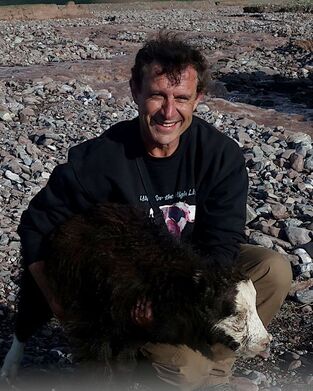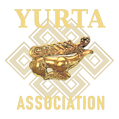YURTA Association: a passion at the service of the nomadic-tradition indigenous communities
YURTA Association is a legal non-profit association created to give a formal status to the initiatives developed by Santiago J. Carralero in the field of the nomadic-tradition cultures. Without registred members, YURTA usually works in collaboration with governmental institutions, organizations, indigenous associations and committed individuals when developing projects on the field or attending events. YURTA also produces artworks and films, publishes books and issues expert reports.
|
Academic formation
Santiago Carralero is twice graduate (Geography and History, and Social and Cultural Anthropology, UNED-Madrid), Expert in Indigenous Peoples, Human Rights and International Cooperation (UC3M), and Master in Anthropological Research and its Applications (UNED).
|
Santiago J. Carralero Benítez Applied anthropologist, historian and geographer specialized in nomadic-tradition peoples and their ecosystems "I was born in the southern Spanish city of Málaga and lived in different placs, both in Spain and abroad. During 30 years, I worked as a public officer in Spain, using both paid and unpaid leaves to study and developing projects, visiting more than 30 countries in search of the nomadic heritage, highlighting Chile, Bolivia, Argentina and Peru in America; Namibia, Botswana, Kenya, Uganda and Morocco in Africa, and Tajikistan, Kyrgyzstan, Mongolia, China, Nepal, India, Thailand, Vietnam, Cambodia, Malaysia, Indonesia and The Philippines in Asia.
As a social researcher I has carried out some fieldwork campaigns in South America and Asia. My major anthropological works include a book published in 2007 resuming 3 years of research among the itinerant groups of North-Western India with the leit-motiv of the origin of gypsies (published in Spanish), a research on the present-day situation of the Yaghan people in Navarino Island (Chile), displayed in form of a visual exhibition in the 2009 IUAES Congress (Kunming, China), and some years later (2008-2014), a long campaign carried out in East Tibet (Kham and Amdo), which provided the data to write my master thesis, serving at the same time to gain a specialization in the High Asia environment and culture. More recently, I implemented the two-years porject "Community Dialogues in High Asia" among yak-herding communities of High Asia (2016-17), with FAO funding, and in 2019 elaborated the report "Following the thread of Yak" for IFAD". |
Experience on the field
- Yaghan community in Villa Ukika (Navarino, Chile), Kaweshqar community in Punta Arenas (Chile), Selk´nam community in Tolhuin and Río Grande (Tierra de Fuego, Argentine), Tehuelche-Mapuche community in Esquel (Patagonia),
- Kallawaya community in Charazani area (Altiplano, Bolivia), Yuqui community in Chimoré (Cochabamba, Bolivia)
- Khoisan communities in Namibia (Nyae Nyae) and Botswana (Ganzi), Himba community in Kaokoveld (Namibia)
- Arumanian community in Greece (Samarina area)
- Intermittlently research along 3 years among Itinerant communities in Rajasthan and adjacent states of India
- Intermittlently research along 6 years among Khampa communities in East Tibet (Amdo, Kham), of Qinghai and Sichuan provinces, several campaigns among the Oroqen, Ewenki and Hezhe communities in North-East China (Inner Mongolia, Heilongjiang provinces)
- 2 years on the field (2006-2007) implementing the World Yak Herders Association project with funds of the Food and Agriculture Organization of the United Nations (FAO)
- Currently developing the Naturally NOMADS project, already implemented in Turkey, Georgia, Kyrgyzstan, Uzbekistan, India, Nepal, Thailand, Vietnam, Cambodia, Malaysia, Phillippines and Indonesia
Last consultancy work
Report "Following the thread of Yak"
(commissioned by IFAD, 2019-2020)
Report "Following the thread of Yak"
(commissioned by IFAD, 2019-2020)

